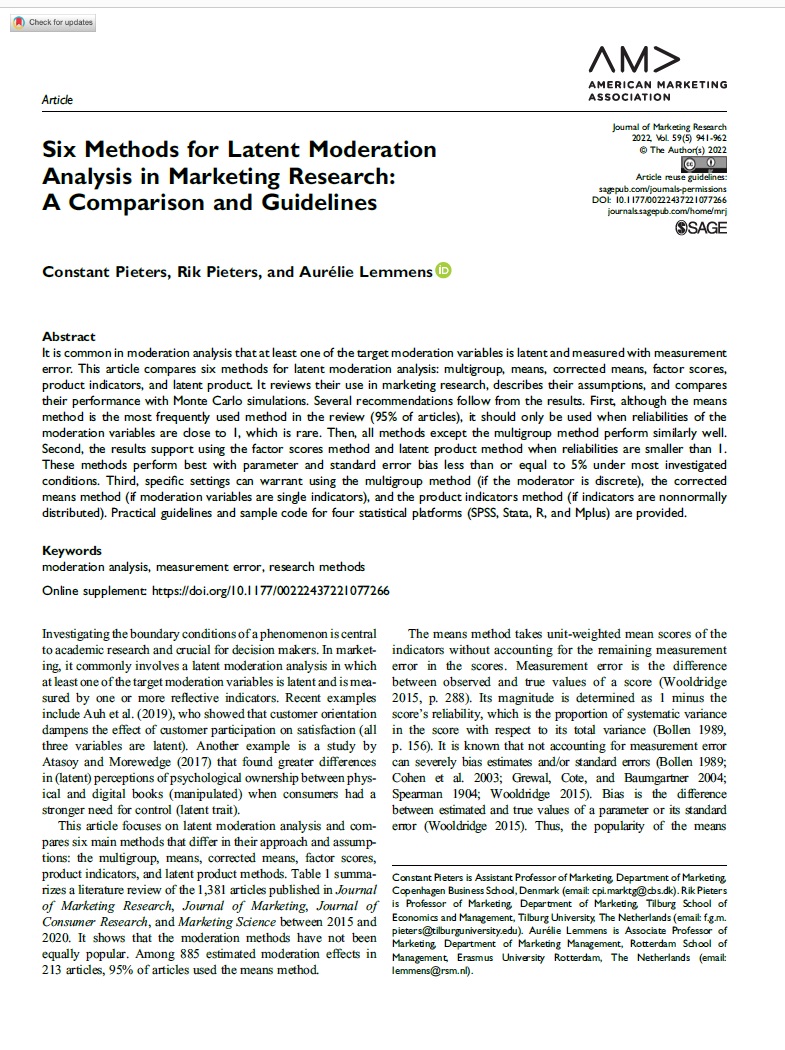Six Methods for Latent Moderation Analysis in Marketing Research: A Comparison and Guidelines
Moderation analysis investigates the conditions under which variables affect outcomes. In marketing, it is common that at least one of the target moderation variables is latent and measured by multiple indicators with measurement error. This paper compares six methods for latent moderation analysis: multi-group, means, corrected means, factor scores, product indicators, and latent product. It reviews their use in marketing research, describes their assumptions, and compares their performance with Monte Carlo simulations. Several recommendations follow from the results. First, although the means method is the most frequently used method in the review (94% of articles), it should only be used when reliabilities of the moderation variables are close to one, which is rare. In that situation, all methods except the multi-group method perform similarly well. Second, the results support the use of the factor scores method and latent product method when reliabilities are smaller than one. These methods perform best with parameter and standard error bias ≤ 5% under most investigated conditions. Third, specific settings can warrant the use of the multi-group method (if the moderator is discrete), the corrected means method (if moderation variables are single-indicators) and the product indicators method (if indicators are non-normally distributed). Practical guidelines and sample code on four statistical platforms are provided to stimulate the adoption of best practices for latent moderation analysis.

